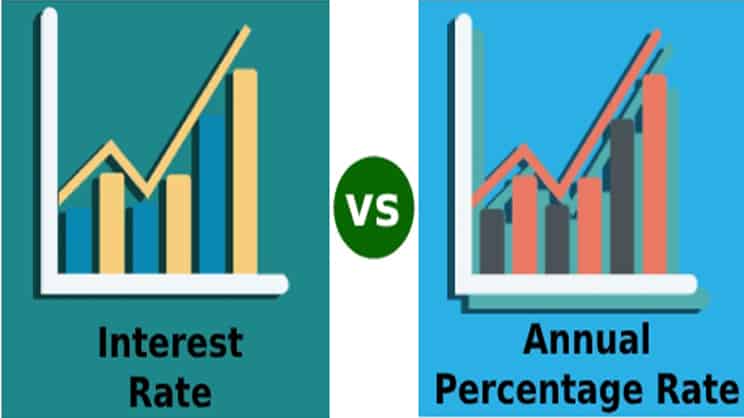
When taking out a loan or credit, there are two key terms you’re likely to encounter – Standard Interest Rates and Annual Percentage Rate (APR). Despite the fact that they both refer to the cost of borrowing money, they are not the same thing. Understanding the difference between the two can help you make better financial decisions.
Table of Contents
What is a standard interest rate?
A standard interest rate is the annual interest rate charged on a loan or credit card balance. It is the percentage of the borrowed amount the lender charges you to use their money.
What is an APR?
The Annual Percentage Rate (APR) is a more comprehensive measure of the cost of borrowing, including fees and other charges. It is expressed as an annual percentage rate, which makes it easier to compare different loan or credit card offers. The APR includes the interest rate and additional costs, such as processing charges, closing costs, insurance costs and other charges.
The APR is calculated by adding up all the costs associated with the loan and dividing it by the loan amount. For instance, let’s say you are offered a loan at 5% interest rate. It also has an additional processing charge of Rs 500. Then, the APR will include the 5% interest rate and the Rs 500 processing fees.
Key difference between standard interest rates and APR
| Standard Interest Rates | APR | |
| Definition | The total cost of borrowing expressed as an annual percentage. | The percentage of the principal amount charged by the lender for the use of the money. |
| Rates include | Interest rate and other fees and charges, such as origination fees, closing costs, etc. | Only the percentage of the principal amount charged by the lender. |
| Importance | Helps borrowers compare the total cost of borrowing across different lenders and loan products. | Helps borrowers understand the cost of borrowing in terms of interest charges. |
| Calculation Method | Takes into account the interest rate, fees, and the loan term to determine the total cost of borrowing. | Calculates the percentage of the principal amount charged by the lender, usually on an annual basis. |
| Disclosure | Lenders are required to disclose the interest rate for loans and mortgages. | Lenders are required to disclose the APR for loans and credit cards. |
Which is better?
Both standard interest rates and APR serve different purposes. A standard interest rate can help understand the cost of borrowing in terms of interest charges alone. This can be particularly relevant for shorter-term loans or loans with fewer fees or charges associated with them.
The APR, on the other hand, gives a more complete picture of borrowing costs, taking into account the personal loan interest rate as well as other costs related to the loan. APR offers a uniform method for assessing the overall cost of borrowing, making it particularly useful for comparing loan offers from various lenders.
Follow – https://sggreek.com for More Updates


